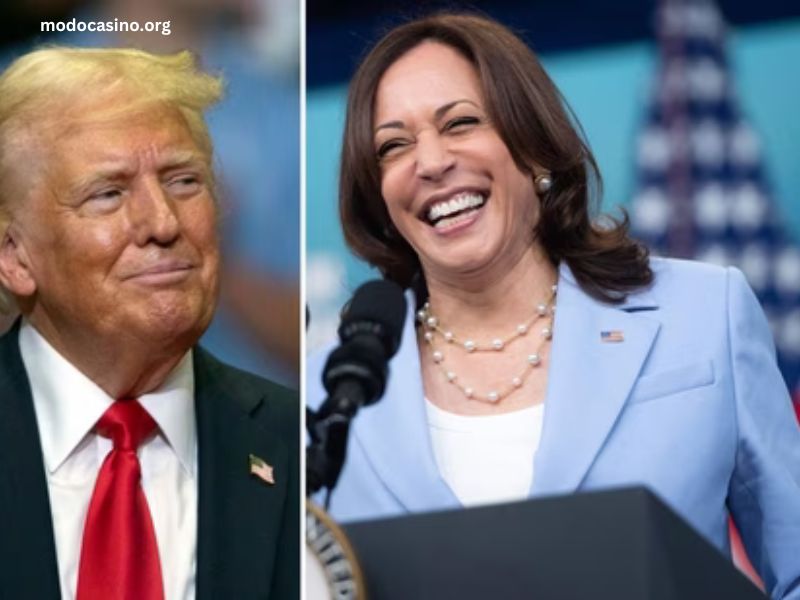The political landscape in the United States is ever-evolving, particularly as the 2024 presidential election approaches. Among the potential candidates, former President Donald Trump and current Vice President Kamala Harris are two figures drawing considerable attention. As the political arena heats up, understanding the odds and dynamics of a potential match-up between Trump and Harris provides valuable insights for voters, analysts, and political enthusiasts alike. This article delves into the various factors influencing the odds of a Trump vs. Harris showdown, including historical context, polling data, electoral strategies, and more.
Historical Context
To fully appreciate the current odds of a Trump vs. Harris match-up, it’s essential to review the historical context of both figures. Donald Trump, the 45th President of the United States, served from January 2017 to January 2021. Known for his unconventional approach to politics and communication, Trump’s presidency was marked by significant controversy, as well as a strong base of supporters. His 2020 re-election bid ended in a defeat to Joe Biden, but he remains a dominant figure in Republican politics and is a leading contender for the 2024 Republican nomination.
Kamala Harris, the 49th Vice President of the United States, assumed office in January 2021. As the first female, first Black, and first South Asian Vice President, Harris has made history and played a significant role in the Biden administration. Before becoming Vice President, Harris was the U.S. Senator from California and the Attorney General of California. Her experience in these roles contributes to her political profile, positioning her as a key figure in the Democratic Party.
Polling Data and Electoral Odds
Polling data is a crucial factor in assessing the odds of a Trump vs. Harris presidential election. Polls provide a snapshot of voter sentiment and preferences at various points in time. As of mid-2024, polls show a complex and competitive landscape.
- Republican Primaries: Donald Trump’s dominance in the Republican primaries is significant. He has maintained a strong lead over other Republican candidates, reflecting his continued appeal among the GOP base. However, it’s important to note that primary dynamics can shift rapidly, especially with new candidates potentially entering the race and evolving political issues.
- Democratic Primaries: Kamala Harris, as the sitting Vice President, is a strong contender for the Democratic nomination. Her incumbency and high-profile role in the current administration provide her with a solid foundation. Nonetheless, she faces challenges from other potential Democratic contenders, and her support among Democratic voters can fluctuate based on various factors, including the administration’s performance and key policy issues.
- General Election Polls: In hypothetical match-ups between Trump and Harris, polling results vary. Some polls show a tight race with Trump and Harris running neck-and-neck, while others indicate a more decisive edge for one candidate over the other. The margins in these polls often depend on recent political events, economic conditions, and voter sentiment on key issues such as the economy, healthcare, and immigration.
Electoral Strategies
Understanding the odds of a Trump vs. Harris election also involves analyzing their respective electoral strategies. Both candidates have distinct approaches to securing votes.
- Donald Trump’s Strategy: Trump’s strategy involves energizing his core base while attempting to appeal to undecided and swing voters. His campaign emphasizes key issues such as immigration reform, economic growth, and law and order. Trump’s ability to mobilize his base and leverage his media presence remains a critical component of his electoral strategy. His campaign is likely to focus on highlighting perceived failures of the Biden administration and presenting himself as a solution to current challenges.
- Kamala Harris’s Strategy: Harris’s strategy revolves around defending the accomplishments of the Biden administration and advocating for progressive policies. Her campaign aims to address issues such as racial and social justice, climate change, and healthcare reform. Harris’s approach involves rallying support from diverse voter groups, including women, minorities, and young voters. Her campaign may also focus on contrasts with Trump’s policies and character, positioning her as a candidate of competence and continuity.
Key Issues and Voter Sentiment
Voter sentiment on key issues plays a significant role in shaping the odds of a Trump vs. Harris election. As of mid-2024, several issues are particularly influential:
- Economic Conditions: The state of the economy is always a critical factor in presidential elections. Economic performance, job growth, and inflation rates can sway voter preferences. Trump’s campaign is likely to emphasize economic achievements during his presidency and criticize current economic conditions under Biden’s administration. Harris, on the other hand, will focus on the administration’s efforts to address economic challenges and promote recovery.
- Healthcare: Healthcare remains a pivotal issue for many voters. Trump’s campaign may focus on criticisms of the Affordable Care Act and advocate for alternative healthcare solutions. Harris’s campaign will highlight efforts to expand healthcare access and address rising costs. The effectiveness of each candidate’s healthcare proposals can influence voter support.
- Social Justice and Climate Change: Issues related to social justice, racial equity, and climate change are increasingly important to voters. Harris’s track record on these issues aligns with progressive values, which may appeal to voters concerned about social and environmental issues. Trump’s stance on these topics may resonate with voters who prioritize different aspects of these issues.
- Foreign Policy: While domestic issues often dominate electoral debates, foreign policy can also impact voter preferences. Trump’s foreign policy record, including his approach to international relations and trade, will be a factor in his campaign. Harris’s position on foreign policy, shaped by her role as Vice President, will also be scrutinized by voters.
Media Influence and Public Perception
Media coverage and public perception play a significant role in shaping the odds of a Trump vs. Harris match-up. Both candidates are subject to extensive media scrutiny, which can influence voter opinions and perceptions.
- Trump’s Media Presence: Trump’s media presence, including his use of social media and traditional media outlets, remains a powerful tool for shaping public perception. His ability to generate headlines and drive media narratives is a key component of his campaign strategy. However, negative media coverage or controversies can also impact his electoral prospects.
- Harris’s Media Coverage: Harris’s media coverage is often focused on her role as Vice President and her policy positions. Positive media coverage highlighting her achievements and leadership can bolster her campaign. Conversely, negative coverage or criticisms can affect voter perceptions.
Conclusion
The odds of a Trump vs. Harris presidential election are influenced by a complex interplay of factors, including historical context, polling data, electoral strategies, key issues, and media influence. As of mid-2024, both candidates are positioned as strong contenders, with Trump’s dominance in the Republican primaries and Harris’s role as the incumbent Vice President shaping the political landscape.
Understanding the dynamics of a potential Trump vs. Harris match-up requires ongoing analysis of polling data, electoral strategies, and voter sentiment. As the election cycle progresses, shifts in public opinion and political developments will continue to impact the odds of this high-stakes political contest. For voters and analysts alike, staying informed about these factors is crucial for navigating the evolving landscape of American politics.




